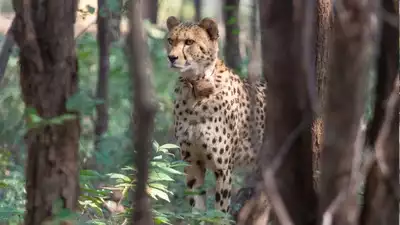Harshita Mathur, Pune
Kuno National Park in Madhya Pradesh reported its ninth cheetah death on August 2, 2023. Aseem Srivastava, Principal Chief Conservator of Forests (Wildlife), stated that so far, five adult cheetahs and four cubs have perished, taking the toll to nine within 11 months.
The national park stated in a press release that Dhatri (Tiblisi), one of the female cheetahs, was discovered dead this morning, and a postmortem is being performed to ascertain the cause of the death. The press release also stated that a total of 15 cheetahs are left, out of which seven are males, seven are females, with one cub. The notice added that 14 of them are healthy, and their health is being regularly monitored by the team comprised of Kuno wildlife veterinarians and the Namibian expert. Another female cheetah who is still out in the open is being closely observed by the Namibian specialist, Kuno veterinarian, and management team on a daily basis, with efforts being made to get her back to the boma for a health assessment.
After the deaths of eight cheetahs in late July, the Supreme Court requested the Center’s answer over a series of cheetah fatalities at Kuno National Park, stating that “40% of deaths occurring within a year does not reflect a good picture.” The Central Government, in response to this statement, informed the Supreme Court that the deaths of five adult cheetahs translocated from Africa to India and three cubs were caused by natural causes and not by any “inherent unsuitability” of the Kuno National Park location. The plan has also ruled out the option of moving the 14 surviving cheetahs and a single youngster to a different environment for the time being.
Adding to this, the Center stated that cheetahs have a poor adult survival rate of roughly 50%, even in “non-introduced populations,” based on “general scientific awareness” of their ability to survive in the wild. The affidavit continued, “Mortalities, though troubling and in need of redress and curtailment, are not overly alarming.” In the case of being introduced into a habitat, this rate goes “even much lower,” which may lead to roughly 10% survival in cubs.
